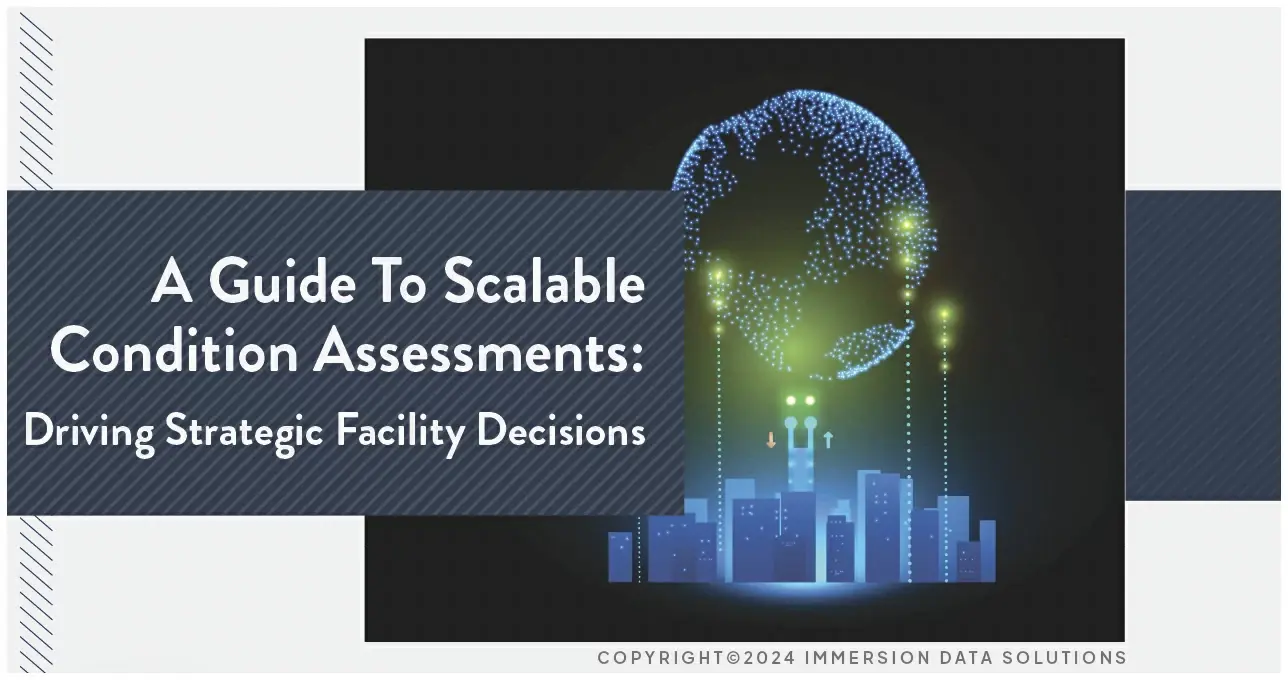Facility Assessments: From Basics to Digital Twins

In Facility Management, staying technology savvy and ahead of the curve is crucial. For facility leaders, gaining comprehensive visibility into the state of their built environments is critical for driving operational excellence and strategic decision-making. However, assessing the condition of facilities across a distributed portfolio can be challenging. The key is implementing a scalable, data-driven approach to facility condition assessments that aligns with available resources and desired outcomes.
Recently, industry experts Myriah Kingen from Tractor Supply Company and Tia Kachman from Immersion Data Solutions offered a deep dive into the world of facility assessments, exploring three key types and their respective benefits and challenges. According to Kingen,"CEOs should create a culture that makes location intelligence a trusted resource in the C-suite." She advocates embracing facility condition assessments as a powerful tool for leadership teams to gain transparency and make informed, immersive data-driven location intelligence decisions. Kachman agreed, "Condition assessments, along with the transformative layering effect off immersive data can help you create budgets based on that qualitative detail, minimize emotional or political decisions on spending, extend asset life cycles, and improve safety and compliance across your portfolio...remotely, and at the tip of your finger."
The insightful conversation highlighted the path forward from traditional methods to advanced digital approaches, showcasing the evolution in facility management techniques. By understanding the strengths of manual checklists, electronic app-based tools, and immersive digital twins, facility teams can select the appropriate approach to capture strategic facility intelligence.



1. MANUAL CHECKLIST ASSESSMENTS: THE FOUNDATION
- The manual checklist represents the most basic yet common starting point for facility condition assessments. The process is straightforward - define key checklist questions, distribute editable documents or forms to a survey team, and compile findings from on-site evaluations.
- This method's advantages include speed of deployment, low overhead costs, flexibility to modify questions, and the ability to conduct deep dives into specific sites. However, manual processes also risk subjectivity in observations, inconsistent data quality across surveys, and lack of integrated analysis capabilities.
As Myriah Kingen, Director of Facilities at Tractor Supply Company, recalls from experience, "It was painful...there was absolutely no standardization." While ideal for focused assessments by limited personnel, the manual approach has limitations when scaling across larger portfolios.
2. ELECTRONIC APP-BASED ASSESSMENTS: CONSISTENCY AND INTEGRATION
- To drive more consistency in data quality while retaining the focused inspection model, many facility teams graduate to electronic app-based assessment tools. By defining questions and controlled response fields within intuitive mobile applications, this method enhances consistency of recorded inputs and multimedia attachments like photos.
Tia Kachman, Director of Customer Success at Immersion Data Solutions, explained, "Most of the apps now are going to allow you to look at your portfolio as a whole...and enable you to make some actionable decisions from that immediately." Electronic apps streamline data aggregation for comparative analysis while improving response objectivity through specified rating criteria and visual verification.
As one Facilities Director commented, "The solution has been invaluable for teams that do not get to travel to our stores." Electronic apps enable readily-accessible location intelligence at scale while integrating condition data with other organizational systems and workflows.
While representing an investment over manual methods, app-based assessments provide rapid returns through efficiency gains, inter-departmental collaboration, and the ability to incorporate third-party service providers seamlessly based on verified condition data.
3. IMMERSIVE DIGITAL TWINS: STRATEGIC DECISION ENGINES
- For organizations seeking a centralized, holistic facility intelligence platform, immersive digital twins have emerged as a powerful solution. Combining electronic assessment capabilities with 3D modeling, reality capture technologies like photogrammetry and LIDAR scanning, digital twins deliver unprecedented depth of insights along with interactive visualization and analysis.
As Kachman describes, "Putting the power back into the decision maker's hands is what this brings." Digital Twins integrate multiple data streams into unified models allowing professionals across the entire enterprise to visualize impacts, extract advanced analytics, simulate scenarios, and drive coordinated actions from a common data fabric.
From streamlining budget forecasting to optimizing capital planning based on verified condition ratings, digital twins unlock strategic advantages.
As one client confirmed, they "saved over $400,000 in change orders from the year before" after transitioning to data-driven proposals informed by their digital twin.
While representing a higher implementation investment, digital twins deliver unmatched returns by enabling coordinated decision-making, reducing operational silos, mitigating risks through predictive capabilities, and providing immersive access to strategic location intelligence.
As facilities continue their digital transformations, the demand for comprehensive portfolio and facility condition data will only intensify. By evaluating their goals, resources and digital maturity, leadership teams can chart an appropriate roadmap - from manual checklists for basic assessments to digital twins as a strategic differentiator.
THE UNIFYING FACTOR?
Adopting a data-driven, iterative approach to capturing insights into the condition of their built assets through scalable, technology-enabled assessments. The organizations positioning themselves at the forefront of strategic facility intelligence will be primed to outpace disruption and outperform competition.
For more information, check out "A Guide To Scalable Condition Assessments: Driving Strategic Facility Decisions", below.

